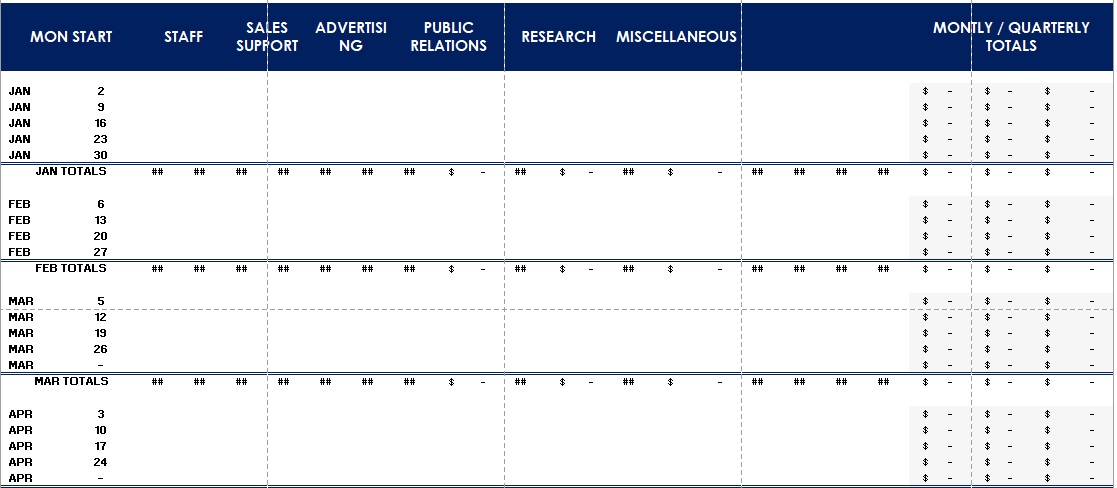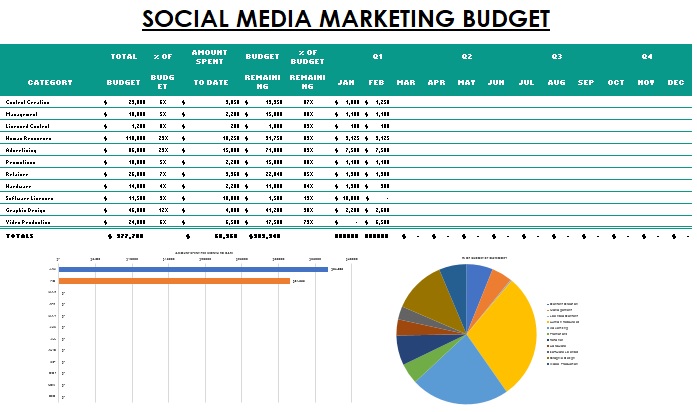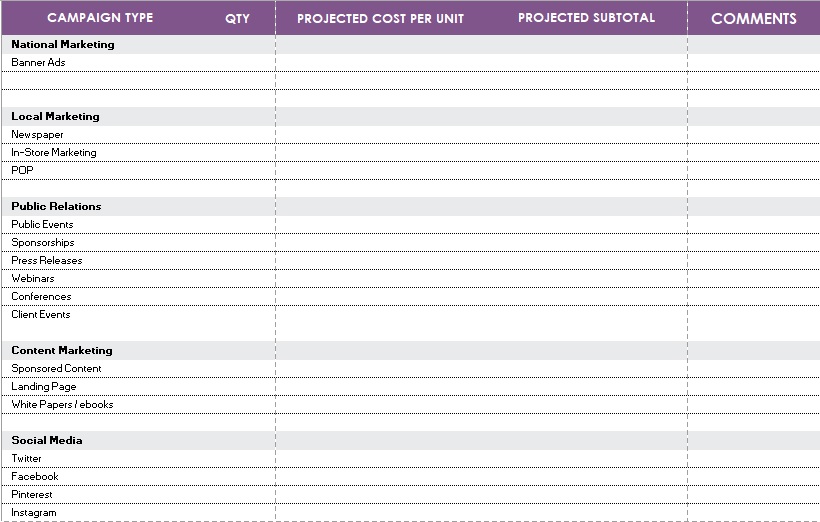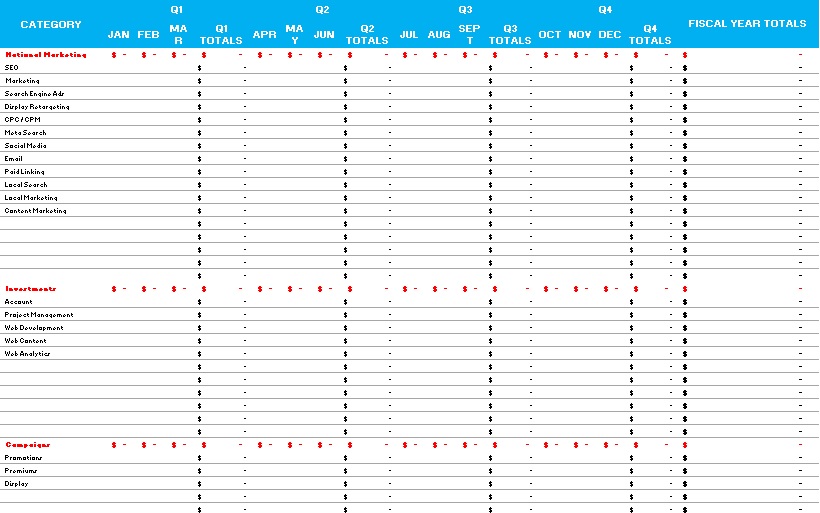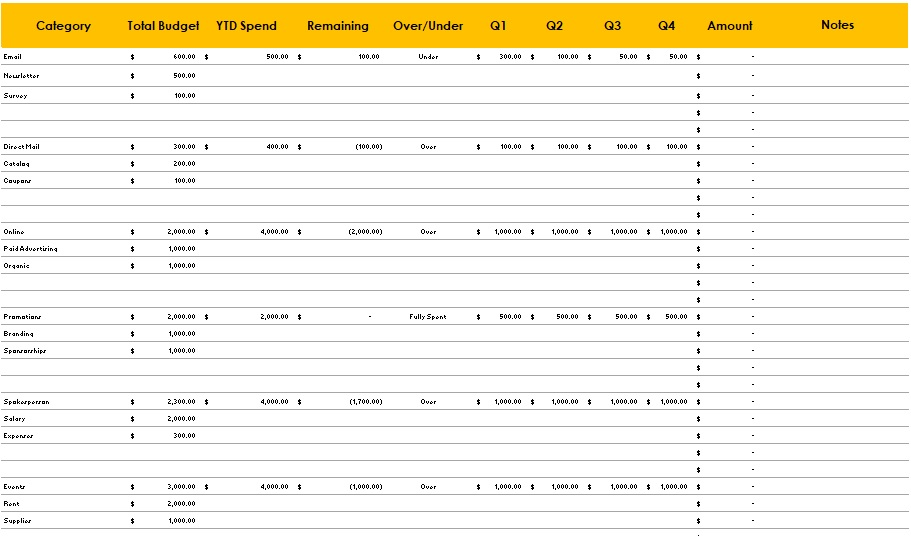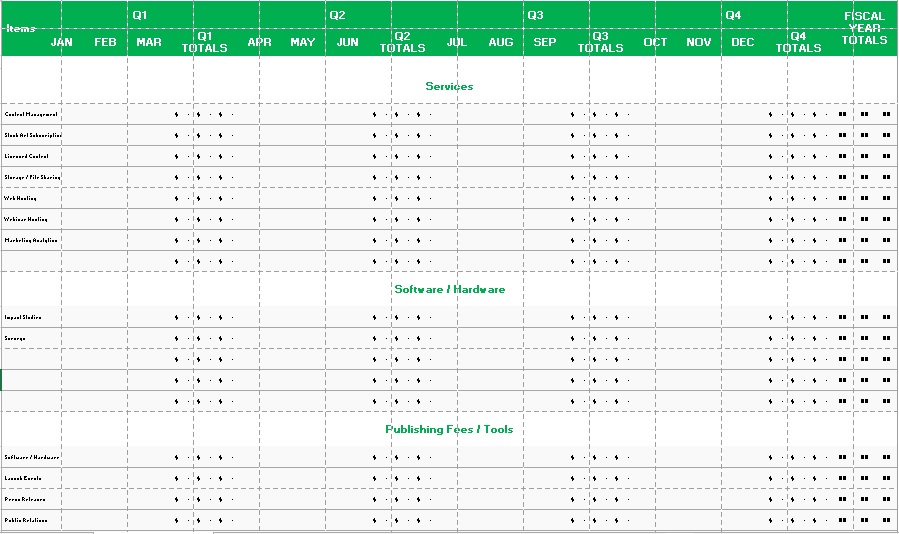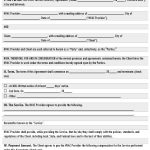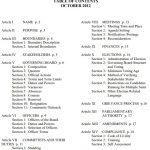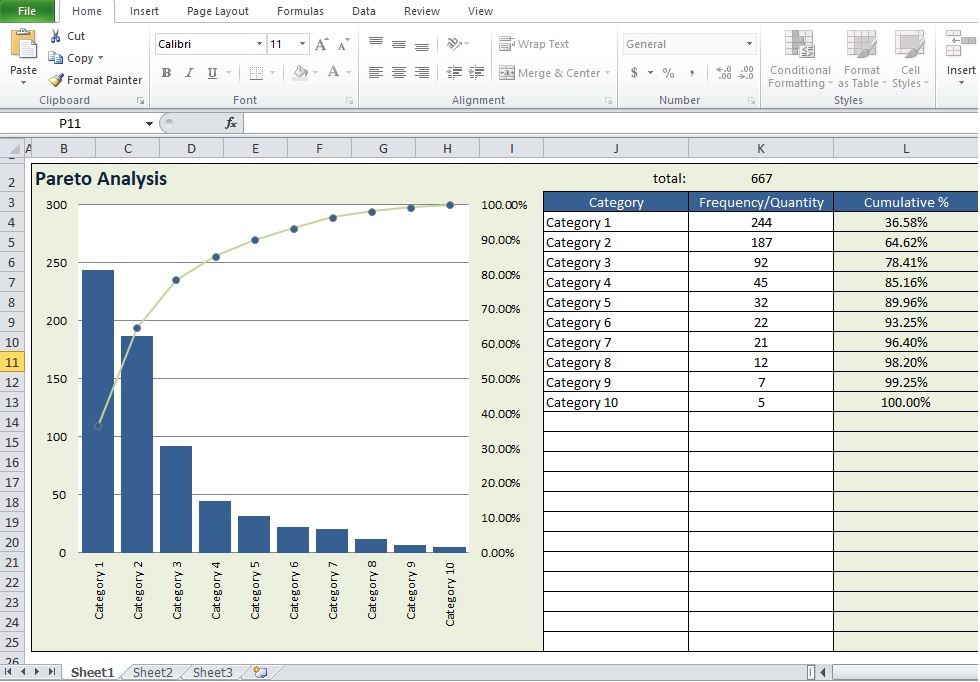Companies use a marketing budget template to effectively plan, monitor, and control their marketing expenditures. This comprehensive document specifies an organization’s allocations to its marketing-related initiatives and projects. This document acts as a road map for the estimated costs which are associated with various marketing ventures such as;
- Paid advertising
- Marketing personnel
- Marketing automation software
- Web content
Table of Contents
Planning your marketing budget:
Planning your marketing budget for promotional activities includes a layout of all the details of strategies and tactics that are required to achieve the organization’s marketing goals. This plan also specifies the costs incurred in achieving these goals. To execute your plan, it also covers the following channels that you will need;
- Social media
- Google Ads
- Public relations
- Print advertising
- Demonstrations
- Promotions
- Free product samples
Consider the following guidelines to plan your marketing budget;
Identify your buyer’s journey
Understanding the buyer’s journey is the first way to plan a budget. You can understand your customer’s motivations, primary interests, interactions with your products, and marketing channels when you know how they think. After understanding this section, you become able to know which channel is most effective and how to use it.
Moreover, there are specific things that you must research to better understand your customers. Think about what encourages your customers to buy your products. Also, you have to search for the number of leads you get through your marketing channels as well as how many of them actually become customers. Next, determine how much it costs to get those leads.
Use the 5% rule
A rule of thumb in the business world motivates business owners to adopt the 5% method for their marketing. According to the 5% rule suggestion, for promoting products or services, businesses should use between 2% and 5% of their total sales revenue. However, companies can select a suitable percentage on the basis of their goals and their position in the market.
What to include in your marketing budget?
Your marketing budget should include the following details;
Company details
The marketing budget template is personal so it should contain the company’s name, its logo, marketing project, and client details.
Total marketing budget
Analyzing the cost of a project is the primary purpose of a marketing budget. So, include these details in your document.
Marketing categories
There are different categories and sub-categories in a marketing plan. Don’t forget to include all of these categories and their sub-units in your document.
Year-to-date spending
In case, you have spent money on previous marketing campaigns, the year-to-date spending is applicable. In such a scenario, by adding different quarterly expenditures specify the total amount you have spent on marketing projects in a year.
Funds remaining
Indicate in the template the remaining amount left after subtracting your YTD spending from your total marketing budget.
Quarterly spending
Your template should contain four columns because there are four quarters in a year. You can add your quarterly spending in these columns.
Free Marketing Budget Template
Social Media Marketing Budget Template
Marketing Budget Plan Template
Digital Marketing Budget Template
Printable Marketing Budget Template
Content Budget Template
Channel Marketing Budget Template Excel
How to make an effective marketing budget?
Here are some tips that you must consider to make an effective budget;
- You must consider what your competitors spend on their campaigns while making your budget plans. After that, plan accordingly by using that estimate for yours.
- Getting relevant statistical data is an integral part of budgeting. With the help of statistical data, you can understand the main points, executable strategies, and marketing channels.
- Tailor your budget while planning in such a way that it meets your marketing goals for the year. Design the budget with a focus on achieving the current objectives rather than distributing funds across all channels.
- When you are executing your marketing plan, you may encounter unexpected costs. In case, an unexpected expense occurs then by documenting and acknowledging it you can plan for it in the next budget.
- It is important to measure ROIs to know where to direct the increased percentage of total revenue. They provide you a clear guideline regarding the effectiveness of the increased spending.

